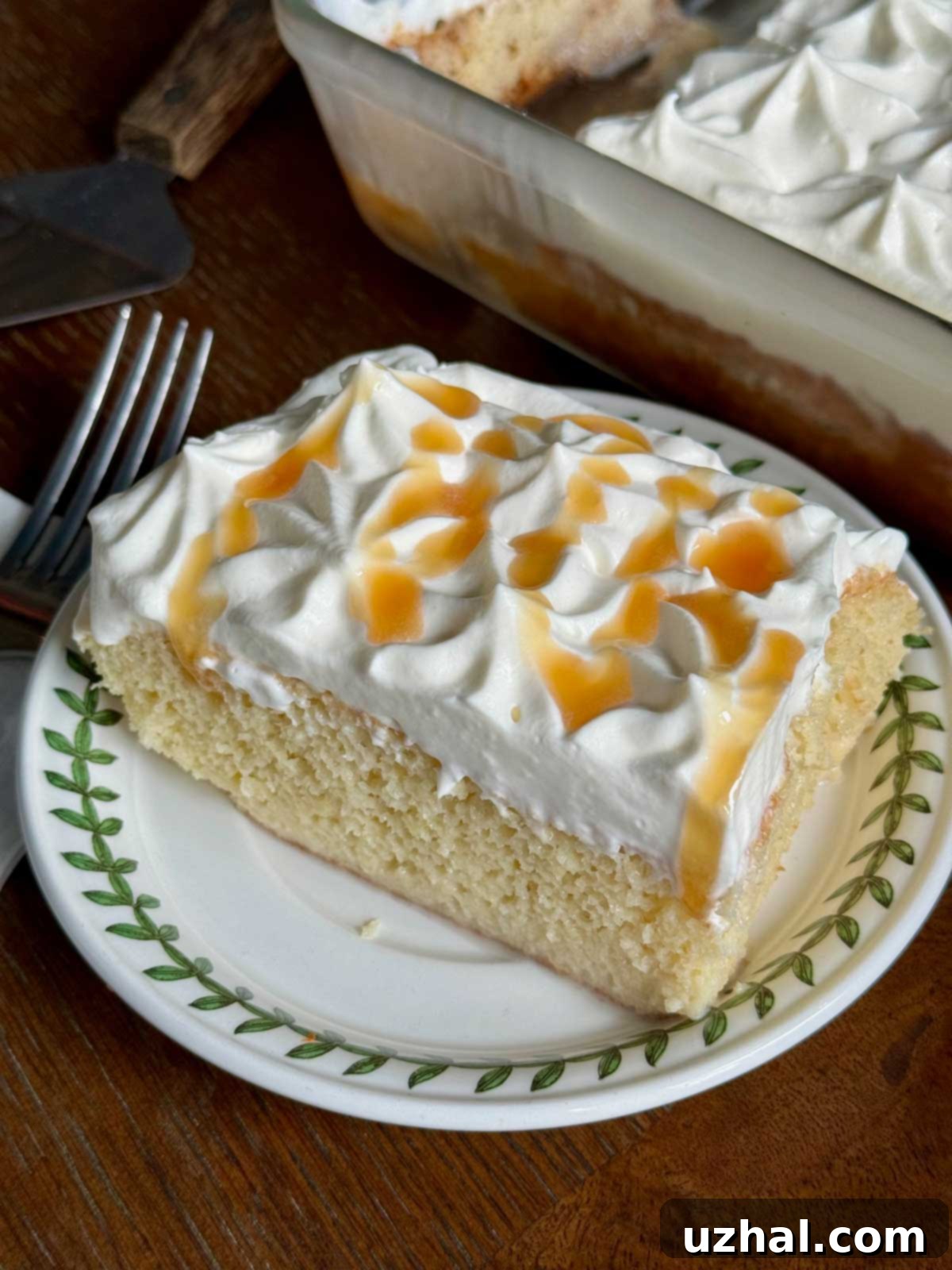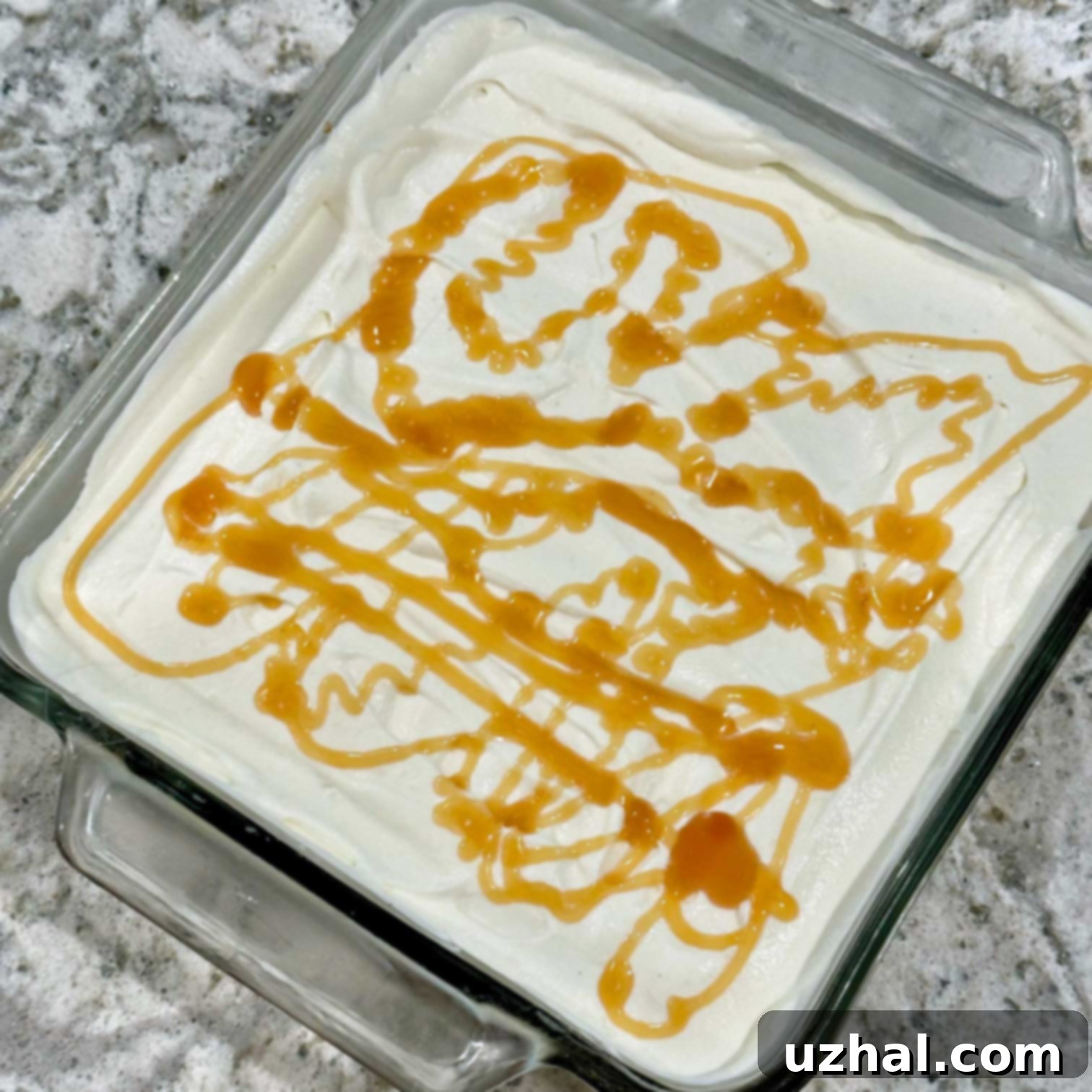Classic Tres Leches Cake Recipe: A Rich & Creamy Delight with a Sour Cream Secret
Few desserts capture the hearts and palates quite like Tres Leches Cake. This beloved “Three Milks Cake,” or Pastel de Tres Leches, is a culinary icon across Latin America, and its popularity has beautifully migrated to regions with strong Latin influences, such as Texas. In Houston, a vibrant city known for its diverse culinary landscape and multitude of Mexican and Latin American restaurants, Tres Leches holds a particularly special place. I still vividly recall my first encounter with this ethereal dessert at Churrascos in River Oaks. Their version, from what I remember, was crowned with a delicate meringue topping and possessed an incredibly light, almost cloud-like texture. My only regret is that this delightful dessert entered my life so late, as there are countless variations to explore and savor.
The truly good news is that Tres Leches Cake, despite its seemingly complex nature, is surprisingly simple to recreate at home. It has become a regular fixture in my kitchen, though I confess to a habit of tweaking the recipe each time I make it. However, one particular adaptation consistently stands out as my tried-and-true favorite: this Tres Leches with sour cream, a unique twist originally inspired by an old recipe published in the esteemed Houston Chronicle. This recipe yields a cake that is exceptionally moist, perfectly sweet, and features a subtle tang that elevates it above the ordinary. Prepare to be enchanted by its rich, creamy goodness!
Jump to Recipe

The Origins and Enduring Appeal of Tres Leches
While the exact origins of Tres Leches Cake are somewhat debated, its widespread popularity across Central and South America is undeniable. Many culinary historians suggest that the concept of a “soaked cake” likely arrived in the Americas from Europe, where dishes like British trifle and Italian zuppa inglese were common. However, the unique combination of three milks – evaporated milk, condensed milk, and whole milk – truly took hold in the early 20th century. This was largely due to the increased availability and aggressive marketing campaigns of canned milks, particularly from companies like Nestlé, which often printed recipes on their labels. These recipes quickly became staples in home kitchens, evolving into the beloved Tres Leches we know today.
Tres Leches is more than just a dessert; it’s a celebration of flavor and texture. It typically features a light, airy sponge cake, which acts as the perfect canvas for absorbing a rich, sweet blend of three different milks. This soaking process transforms the cake, giving it an incredibly moist, almost custard-like consistency without being soggy. It’s a dessert often served at birthdays, holidays, and family gatherings, symbolizing warmth, generosity, and the joy of sharing good food.
Unveiling the Houston Chronicle Tres Leches: A Unique Adaptation
This particular Tres Leches recipe is a cherished adaptation of one that first graced the pages of The Houston Chronicle in 1998, originally titled “Pastel de Tres Leches.” What sets this recipe apart from many traditional versions are a few distinct characteristics that contribute to its exceptional texture and flavor. Firstly, it calls for separating the eggs and beating the whites to stiff peaks, a technique that incorporates more air into the batter, resulting in an incredibly light and delicate sponge cake. Unlike some cake recipes, this one omits butter, further emphasizing that airy texture and allowing the rich milk soak to truly shine as the star.
Perhaps the most distinctive element is the inclusion of sour cream as one of the “three milks.” This might sound unconventional, but it adds a wonderful depth and a subtle, pleasant tang that beautifully balances the sweetness of the condensed milk. The sour cream also contributes to a creamier, more luxurious milk mixture that permeates the cake beautifully. The original recipe specifies a generous 9×12 inch or 9×13 inch baking dish, perfect for feeding a crowd. However, I often find myself halving the recipe and using an 8-inch square casserole dish, which is ideal for smaller gatherings or when I simply can’t wait for a full batch. For optimal flavor and moisture absorption, it’s highly recommended to prepare the cake a day in advance, allowing it to thoroughly chill and fully absorb the milk mixture overnight. Then, simply whip up the fresh cream topping just before serving. In practice, however, I frequently bake the cake in the late afternoon, allow it to cool, and then add the whipped cream before chilling the entire dessert for a few hours. While it’s perfectly delicious after just a few hours in the refrigerator, I can confirm that it is truly sublime the next day, once all those flavors have had ample time to meld and deepen.
The Power of the Three Milks (Plus One Secret Ingredient)
Understanding the role of each dairy component in Tres Leches is key to appreciating its genius. Sweetened condensed milk provides the dessert’s signature sweetness and rich, thick consistency. Evaporated milk, being unsweetened but still concentrated, adds a creamy depth without overwhelming the sugar content. Whole milk acts as a lighter base, helping the other milks to penetrate the cake evenly. In this Houston Chronicle adaptation, the addition of sour cream is a game-changer. It introduces a subtle tang that cuts through the sweetness, preventing the cake from being overly cloying. It also contributes an extra layer of richness and a velvety mouthfeel to the milk soak, making each bite incredibly satisfying. For best results when combining the milks, ensure all ingredients are at room temperature to avoid any small lumps from the sour cream. Any minor lumps will dissolve into the cake anyway, so don’t fret if you see a few.
Navigating the Gluten-Free Challenge with Tres Leches
For those seeking a gluten-free version of this delightful cake, a word of caution regarding this particular recipe: gluten-free all-purpose flour blends have not yielded satisfactory results for me, at least not with the specific ratios used here. I’ve tested this recipe with well-regarded blends like Thomas Keller’s Cup4Cup, and the cake consistently came out with an undesirable mushy and mealy texture. The delicate structure of a traditional sponge cake, which is crucial for absorbing the milk mixture without disintegrating, seems to be particularly sensitive to the different properties of gluten-free flours. These flours often absorb liquids differently and may lack the elasticity needed to maintain the cake’s integrity when saturated.
While I’m confident that there are excellent gluten-free Tres Leches recipes out there, they typically involve specific formulations designed to account for the unique characteristics of gluten-free ingredients. This might mean adjusting the liquid ratios, incorporating different starches, or using alternative leavening methods. For this specific Houston Chronicle adaptation, with its unique egg-separation method and precise ingredient balance, conventional all-purpose wheat flour simply works best to achieve the desired light, airy texture that holds up beautifully to the three-milk soak. If you are committed to a gluten-free Tres Leches, I would recommend seeking out a recipe specifically developed for gluten-free ingredients, rather than attempting to substitute flour in this particular recipe.
From Scratch or Cake Mix: Both Paths Lead to Deliciousness
This “from scratch” Tres Leches recipe has become my absolute go-to for weeknight desserts, and for good reason. I almost always have the staple ingredients on hand – flour, eggs, milks – and the process, while involving a few steps, doesn’t take an inordinate amount of time to put together. There’s a particular satisfaction that comes from creating a dessert entirely from basic ingredients, and the resulting flavor and texture are truly rewarding.
However, it’s important to acknowledge that my very first foray into the world of Tres Leches was actually via a cake mix version from Food.com (formerly Recipezaar). And let me tell you, it was absolutely fantastic! For those who are short on time, new to baking, or simply prefer the convenience, a high-quality cake mix can serve as an excellent base for Tres Leches. The simplicity of preparing the cake layer allows you to focus more on the critical three-milk soak and the whipped cream topping, which are arguably the most distinctive elements of this dessert. While I now lean towards this scratch version, I can wholeheartedly recommend the cake mix version as a perfectly legitimate and equally delicious option. Don’t let perceived complexity deter you from enjoying this incredible dessert; choose the method that best suits your comfort level and schedule. Whether from scratch or a convenient mix, the end result is a moist, milky, and utterly delightful treat.
- Tres Leches Madness
- Cake Mix Tres Leches Cake
- Coconut Tres Leches Cake with Mexican Vanilla
- Tres Leches Bread Pudding
- Houston’s Veggie Burger
Recipe

Tres Leches Cake
Anna
Pin Recipe
Ingredients
Cake:
- 1 ½ cups all-purpose flour (200 grams)
- 2 teaspoons baking powder
- ⅛ teaspoon salt (optional, see note)
- 4 large eggs separated, at room temperature for best results
- 1 ½ cup granulated sugar (300 grams)
- 1 teaspoon vanilla extract (optional, but highly recommended for flavor depth)
- ½ cup milk, whole (114 grams, at room temperature)
Three-Milk Topping:
- 1 cup sour cream (full-fat for richness, at room temperature)
- 14 ounce sweetened condensed milk
- 1 ½ cups evaporated milk
- 1 cup milk (230 grams, whole milk recommended, at room temperature)
Whipped Cream Topping:
- 2 cups heavy whipping cream (very cold)
- ⅓ cup powdered sugar, plus more if desired
- 1 teaspoon vanilla extract
Instructions
-
Preheat your oven to 350°F (175°C). Carefully grease a 9×13 inch baking pan. For a noticeably thicker cake, consider using a slightly smaller 9×12 inch pan or a glass dish of similar dimensions. If you’re opting for a half batch, an 8-inch square dish will work perfectly.
-
In a medium bowl, sift your all-purpose flour with the baking powder to ensure there are no lumps and the leavening agent is evenly distributed. Set this dry mixture aside. If you choose to include salt (which I highly recommend for enhanced flavor), whisk it into the flour mixture now.
-
In a separate, large, and impeccably clean bowl, using clean beaters on your electric mixer, begin beating the egg whites on medium speed until they become foamy and soft peaks begin to form. Gradually add the granulated sugar, about a tablespoon at a time, continuing to beat until the mixture is thick, glossy, and holds stiff peaks. This process ensures a light and airy cake base. Gently beat in the egg yolks, one at a time, just until combined.
-
If using vanilla extract for the cake batter, add it to the whole milk now, stirring to combine. This helps distribute the flavor evenly.
-
Carefully add the flour mixture and the vanilla-infused milk to the egg mixture, alternating between the two. Mix by hand using a spatula, or beat on the lowest speed of your electric mixer, just until the ingredients are blended and no streaks of flour remain. Be careful not to overmix, as this can develop the gluten and result in a tough cake. Pour the batter into your prepared pan and bake for approximately 30 minutes, or until the edges are golden brown and a wooden skewer inserted into the center comes out clean. Remove the cake from the oven and place it on a wire rack to cool.
-
While the cake cools, prepare the luscious three-milk mixture. In a large bowl, whisk together the sour cream and sweetened condensed milk until well combined and smooth. Then, gradually pour in the evaporated milk and the whole milk, continuing to whisk until the mixture is uniform. For the smoothest consistency, try to use room temperature ingredients to prevent small lumps of sour cream from forming. However, don’t worry too much if a few lumps persist; they will be absorbed into the cake during the soaking process.
-
Once the cake is warm (not piping hot, but still slightly warm), use a skewer or a fork to poke numerous holes all over the surface. These holes are essential for the cake to fully absorb the milk mixture. Gradually and evenly pour the prepared milk mixture over the entire cake, allowing it to soak in thoroughly. Let the cake sit at room temperature for another 30 minutes or so to cool completely. Once cooled, cover the pan tightly with plastic wrap and chill it in the refrigerator for several hours, or ideally, overnight. This extended chilling time allows the cake to fully absorb the milks, developing its signature moist texture and deep flavor. Prepare the whipped cream topping shortly before you plan to serve the cake.
-
To make the whipped cream topping, pour the very cold heavy whipping cream into a clean, chilled bowl (preferably metal or glass, also chilled, with chilled beaters). Beat with an electric mixer on medium-high speed until the cream begins to thicken. Gradually add the powdered sugar and vanilla extract, continuing to beat until stiff peaks form and the cream is light and airy. Do not overbeat, or it may turn grainy. Spread the whipped cream evenly over the chilled Tres Leches cake. Continue to chill briefly before serving to allow the topping to set. You can also get creative with garnishes: a sprinkle of cinnamon, a drizzle of caramel sauce, or a scattering of fresh berries like strawberries or raspberries will add both visual appeal and complementary flavors. If you have berries on hand, be sure to place some on each plate as a delightful accompaniment.
-
Cut the cake into generous squares and serve immediately to enjoy its creamy, moist perfection.
Notes
